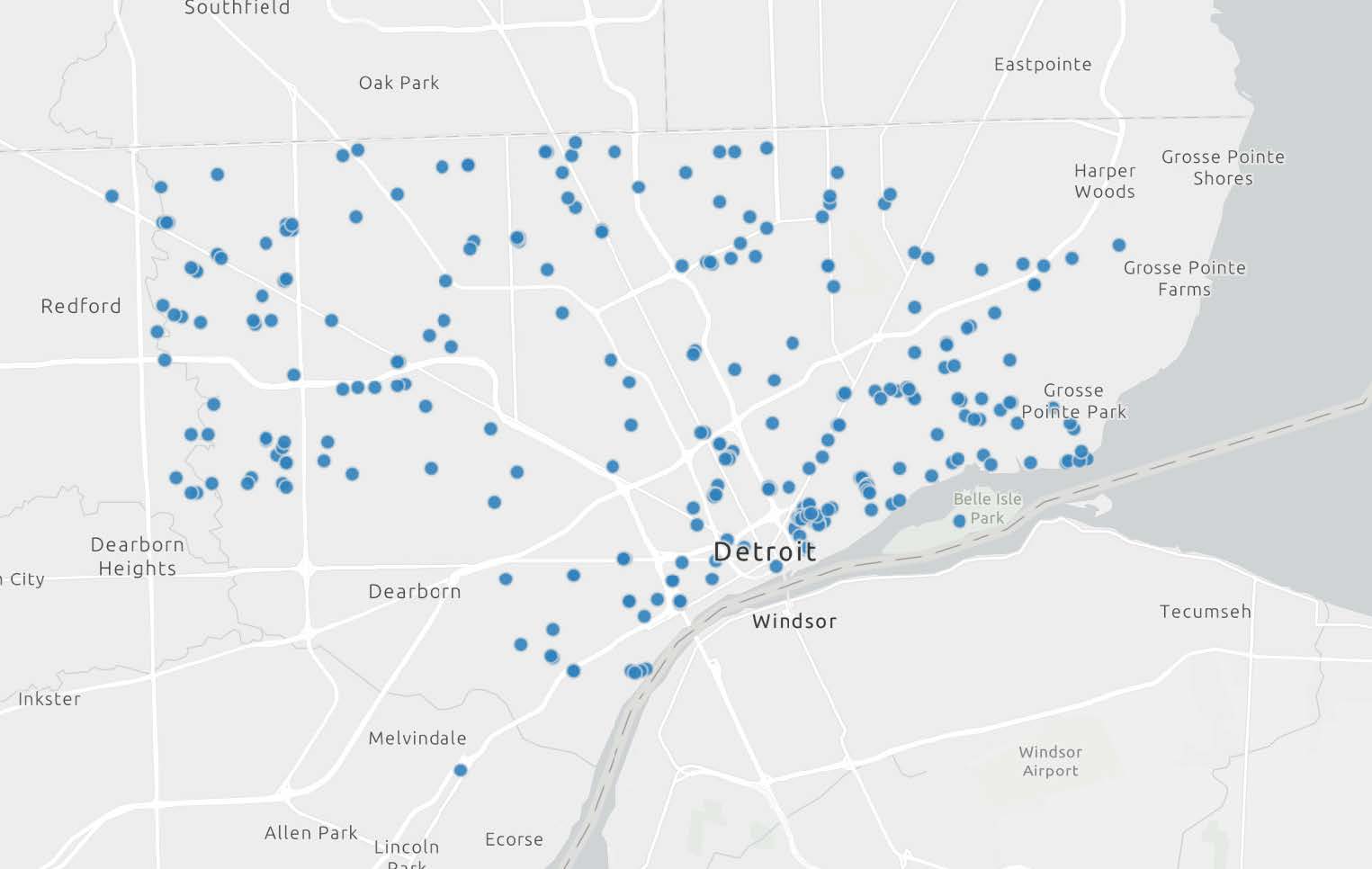When It Rains and Pours, Detroit Gets to Work
Like many other U.S. cities including St. Petersburg, Philadelphia and Houston, Detroit experienced extreme flooding due to climate change weather events. But, in his second term, Mayor Mike Duggan and the Detroit Water and Sewerage Department (DWSD), in cooperation with the Board of Water Commissioners, created a strategy to manage climate change and protect clean water.
DWSD is one of the largest water and sewer utilities in the United States, with more than 2,700 miles of water main and nearly 3,000 miles of sewer collection piping. To put that in perspective, if Detroit placed its pipelines end to end, they could run from Los Angeles to Boston and back, with a little extra left over.

DETROIT'S $605 MILLION INVESTMENT
IN WATER
INFRASTRUCTURE
REPLACEMENT
UPGRADE PROGRAM
AND REPAIR
Detroit's 4-Point Plan to Build a Climate Resilient City
- Create long-term sustainable solutions by replacing aging infrastructure.
- Invest $100 million to upgrade both leak detection technology, monitoring systems and century-old sewer systems.
- Deter a rainfall overload of the system by redesigning larger drainage systems and catch basins.
- Increase the acreage dedicated to Green Stormwater Infrastructures (GSI) to slow or prevent stormwater from entering the combined system.

Detroit Creates Long-Term Solutions
During Mayor Duggan's administration, funding for Capital Improvement Program (CIP) projects that repair and upgrade Detroit's infrastructure has been a focused priority. Since 2018, DWSD has been investing close to $100 million annually into CIP projects, upgrading the city's water, sewer and stormwater systems.
In making these improvements, DWSD has prioritized Detroiters rebuilding Detroit, using Detroit-based contractors to ensure that 51% or more of the hours worked by contractors on DWSD construction projects are performed by Detroit residents.
The City of Detroit has achieved some of the nation's lowest sewerage and lead line replacement costs by focusing on local contractors and creating competition.

Detroit: A National Model for Using Nature to Regulate Massive Stormwater Flooding
Detroit started GSI implementation on vacant lots in 2015 in the Warrendale neighborhood, constructing four bioretention gardens. These eco-sites each capture stormwater runoff from the street and adjacent area and allow it to slowly infiltrate into the ground, keeping smaller storm events entirely out of the combined system.
Together, they remove an average of 1.2 million gallons of stormwater from the combined sewer system every year. In addition, these sites repurposed blighted land and beautified the neighborhood. DWSD worked closely with the University of Michigan Water Center and community leaders in the Warrendale/Cody Rouge area, with additional support from the Detroit Land Bank Authority and the Erb Family Foundation, to bring these projects to fruition.
The process of bioretention as seen in a green stormwater infrastructure (GSI)
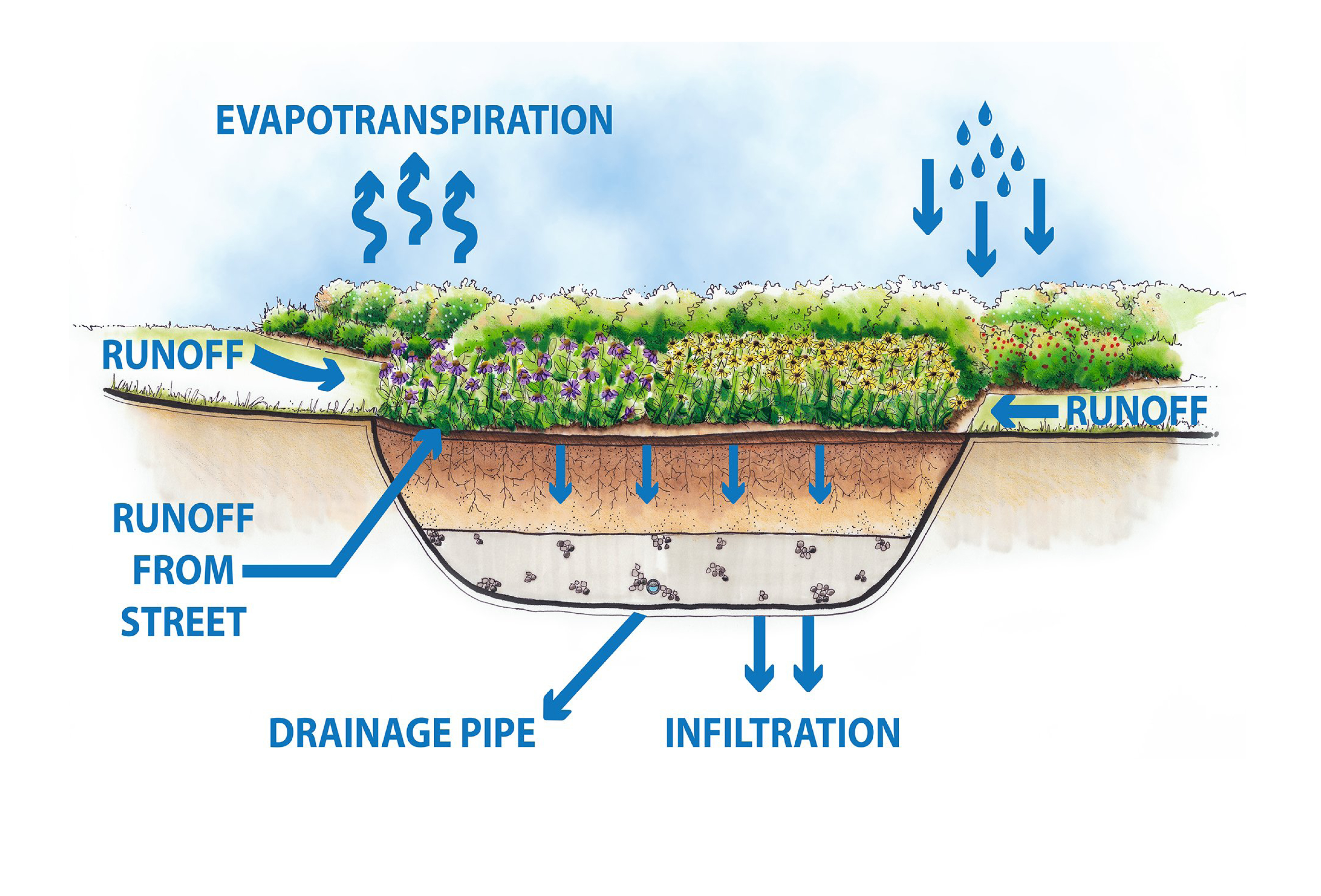
Detroit began neighborhood-scale GSI implementation in the Aviation Sub neighborhood, which had experienced heavy rains and significant flooding during the August 2014 rain event. Detroit alleviated flooding issues in the neighborhood with the Oakman Boulevard Stormwater Project, an $8.3 million investment that converted 10 street medians into bioretention practices, managing 37 million gallons of runoff annually.
The project earned recognition in national industry publications for its nature-based approach and extensive resident input into design.
The many different kinds of GSIs provide more than just stormwater management benefits. They may also provide co-benefits, such as creating greenspace for Detroiters to enjoy, promoting habitat and pollinator health through use of native plants, or providing a cooling effect through tree plantings. GSI is also visible infrastructure, allowing a unique opportunity to educate and inform the public about water quality and stormwater management.
Detroit Retrofitted Public Parks and Public Schools to Reduce Stormwater Flooding
Detroit Public School Community District installed two large bioretention practices at Charles Wright Academy. These bioretention practices treat stormwater runoff from the playgrounds/yards, parking lots and roof of the school building, infiltrating it directly into the soil and discharging excess runoff into the Rouge River.
Almost six million gallons of stormwater are treated by these practices on an annual basis. Placing a bioretention system at a school property provides educational opportunities as the school can incorporate sustainable solutions into their curriculum.
The City of Detroit leveraged its public parks and recreation centers under-used green spaces to create GSI structures. It installed two bioretention practices and a permeable gravel parking lot in Stoepel Park No. 1, collecting and managing 5.3 million gallons of runoff annually.
The redesigned community space also boasts GSI features that manage approximately 2.5 million gallons annually. The native species in these bioretention practices provide pollinator habitat and an eye-catching environment in the park.
Six million gallons of water are sustainably managed at Detroit Public School facilities. Bioretention gardens are created in attached playgrounds, under parking lots and atop school roofs.

Detroit Stormwater Hub Provides Public Information on GSIs such as Cornerstone Village
The multiple bioretention cells in the Cornerstone Village neighborhood manage approximately 0.89 million gallons of stormwater annually.
The GSI component of the project included shallow grass swales between the sidewalk and road on each side of Chandler Park Drive, with trench inlets installed to route runoff from the street into the swales.
The Detroit Stormwater Hub provides a place to share Green Stormwater Infrastructure projects, access resources and learn from one another. Developed in 2017-18, it serves as a tool to familiarize Detroiters with GSI and help them track progress citywide by mapping all public and private GSI projects throughout the city. It now hosts a database of 292 GSI projects within the city, managing millions of gallons annually and also provides a compilation of resources and guides pertaining to GSI implementation.
Creating a City Ordinance to Manage Flooding
Detroit wanted sustainability built into its DNA. To do that it created the Post-Construction Stormwater Management Ordinance.
The ordinance requires that developers of projects with one-half acre or more of impervious surfaces, which prevents water from soaking into the ground, to incorporate stormwater management practices.
The ordinance has led to improved management of rain and snowmelt runoff from more than 600 acres of land across the city, reducing localized flood risk and enlarging system capacity for wet-weather events.
600 acres. That's how much land Detroit's ordinance has added to its sustainable stormwater management.
The ordinance requires developers of one-half acre or more of impervious surface to follow standardized stormwater management guidelines.
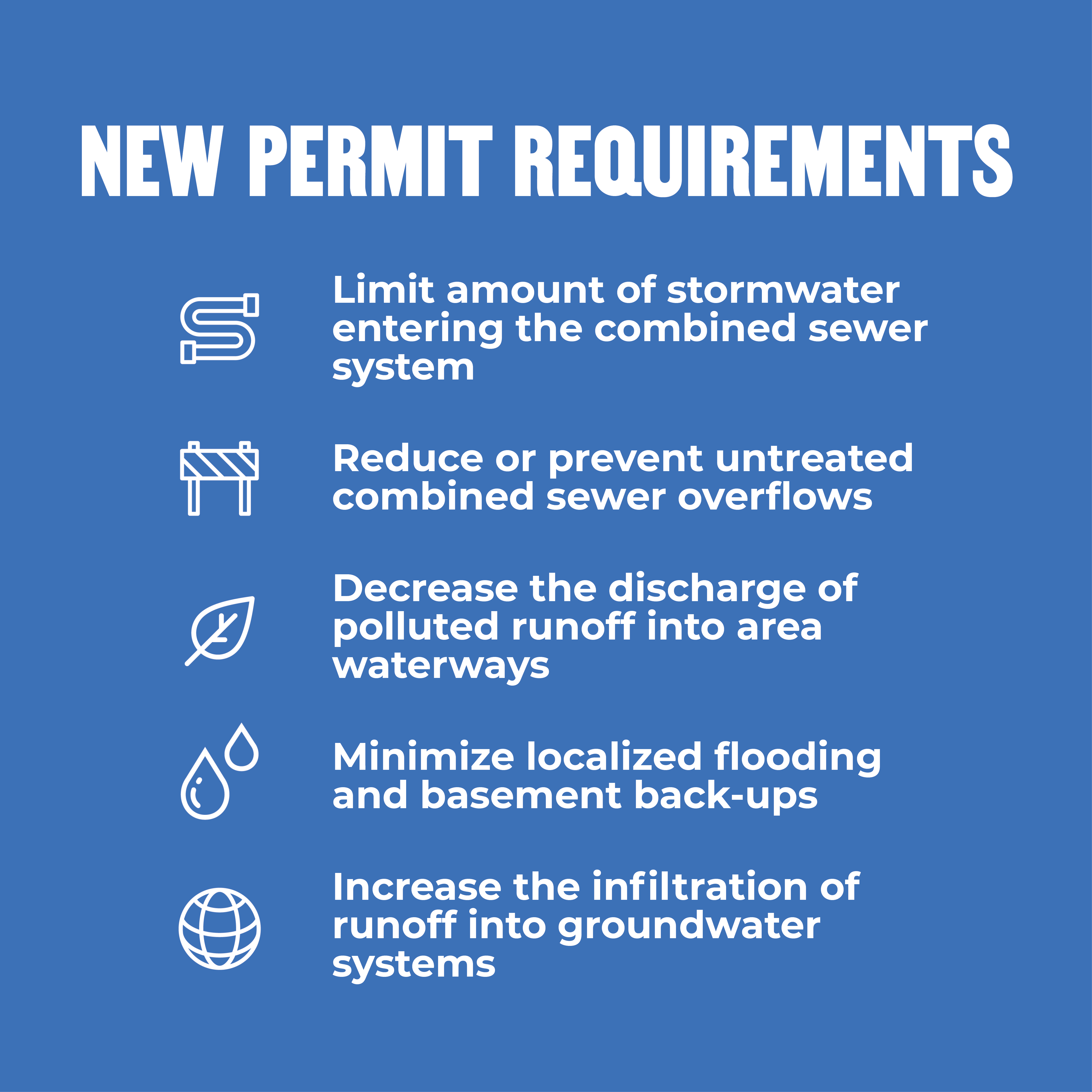
The Stormwater Management Design Manual
DWSD published a Stormwater Management Design Manual. Its purpose is to standardize stormwater design, streamline plan reviews and assist developers with the design of their stormwater controls. Download it here.

Detroit Upgrades 100-Year-Old Lead Lines
Many major U.S. city infrastructures contain outdated lead lines which can become unhealthy and harmful. Detroit preemptively started replacing lead lines along with Pittsburgh, Milwaukee and Cleveland.
Dedicating more than $500 million, the City of Detroit upgraded its water and sewerage lines, replacing more than 132 miles of line since 2014.
It was a big, proactive move. The City of Detroit dedicated $500 million to upgrade Detroit's water and sewer systems. They have replaced more than 134.2 miles of water mains since 2014 and have begun projects managing sewer collection pipes which navigate 37 million gallons of stormwater.
They also plan to replace existing full lead service lines to privately owned homes with copper lines, during water main replacement construction, at no cost to the resident. Further, they have cleaned 1,354 miles of sewer collection piping between 2020 and 2023.
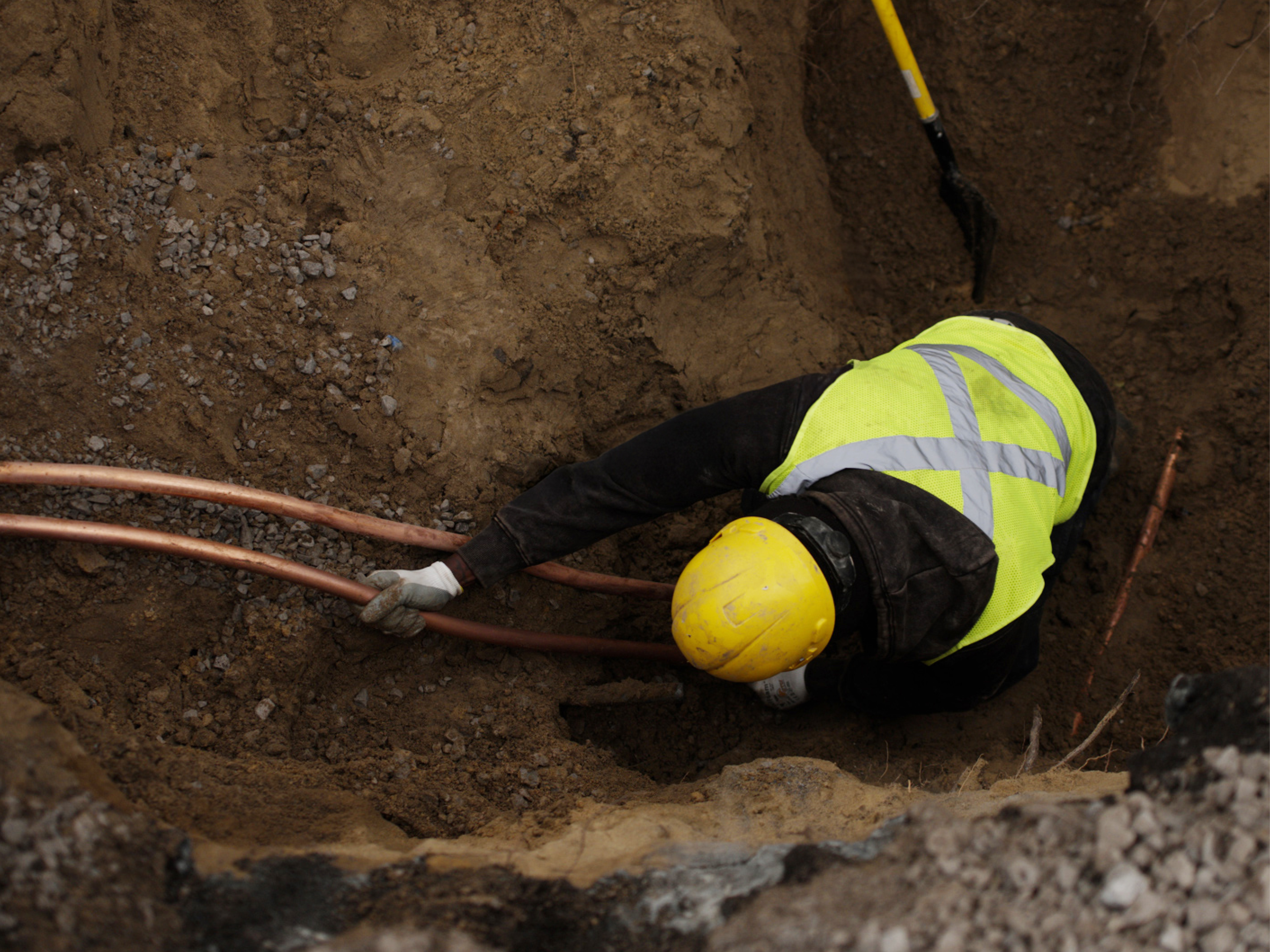
Detroit Uses AI to Save Millions of Dollars on Lead Line Replacements
Detroit partnered with Ann Arbor-based BlueConduit, a company using Artificial Intelligence (AI) to predictively map the probable location and density of lead service lines. In doing so, Detroit has saved $185 million by using BlueConduit's AI rather than digging up 300,000 stopbox/water service lines to determine the service line material type inventory.
The City of Detroit uses AI to create a predictive map, saving $185 million and avoiding digging 300,000 holes across the city.
These measures help make the City of Detroit's drinking water among the safest and cleanest water in the U.S. It meets or exceeds all federal and state regulatory standards under the Safe Drinking Water Act.
Award-Winning Solutions
City of Detroit's strategies have captured national attention. Representatives from Detroit often meet with other municipalities, like Chicago, Denver and Milwaukee, about stormwater projects and the lead service line replacement program, guiding them as they implement Detroit's successes.
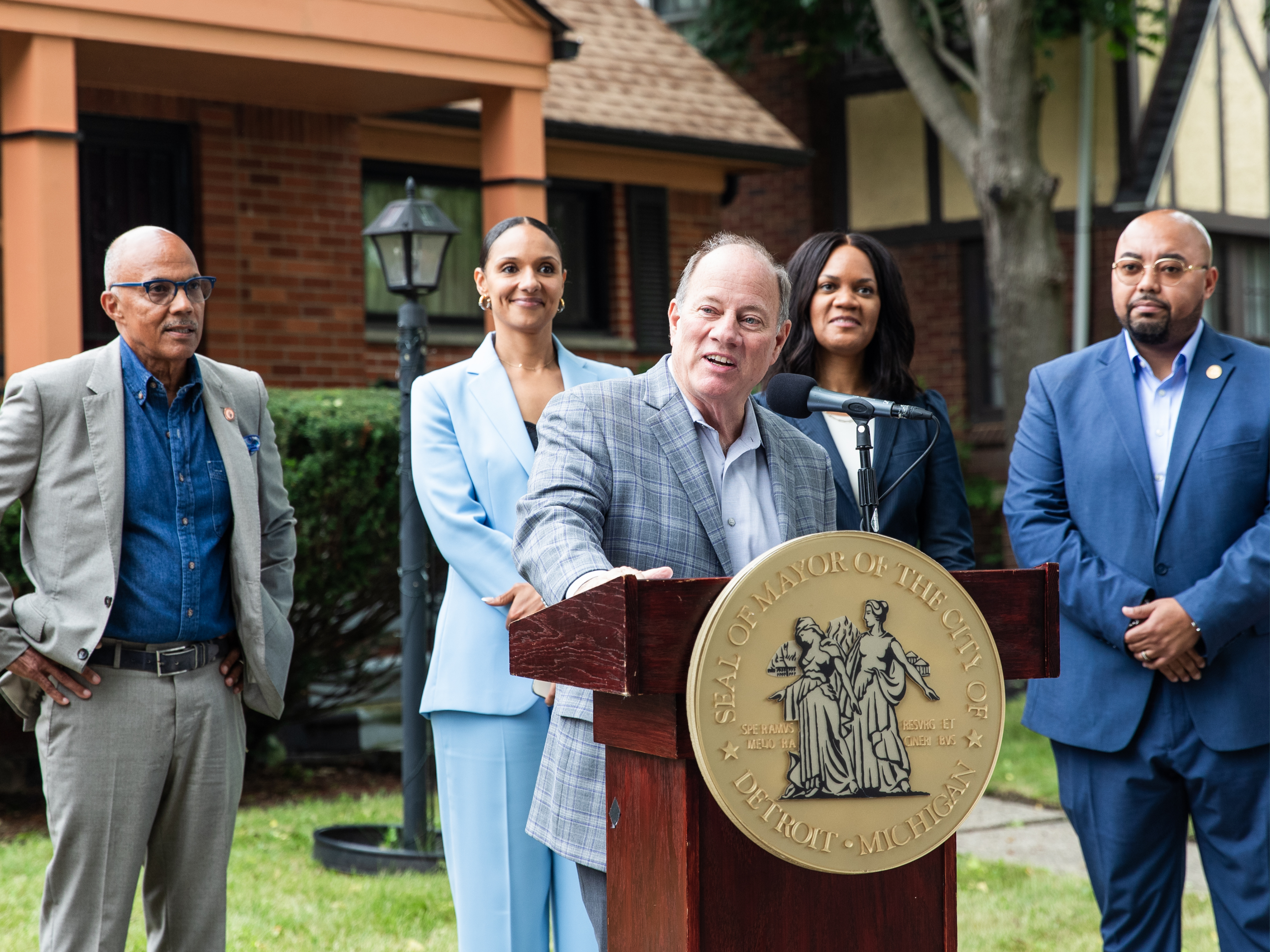
Director Gary Brown is leading his team in managing one of the nation's largest water systems by applying the Mayor's vision of sustainable infrastructure. In GSI construction alone, the city invested $50 million.
The City of Detroit now leads the nation in stormwater management, lead pipe replacements and sustainable solutions that incorporate increasing weather events influenced by climate change.

